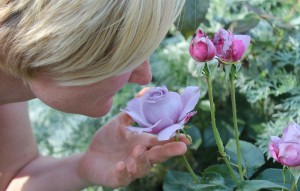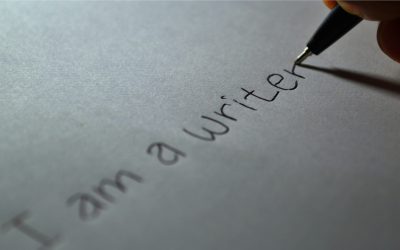“Many early-career authors treat setting as merely an element of the background – an incidental necessity, maybe, but a tertiary craft concern when compared to plot or character development or dialogue.”
—Jacob M. Appel “Know Your Place” Writer’s Digest November/December 2013
Let’s get started:
- Jacob M. Appel – “Know Your Place” (Writer’s Digest November/December 2013).
Appel holds:
- Stories should reveal the setting by the second sentence unless there’s a convincing reason not to.
- Stories should be set in places the writer understands well. The slightest errant details jar readers. He reminds writers that what’s familiar to them may be exotic to readers.
-
Authors must do three things:
º Orient the reader – don’t waste the reader’s energy in his trying to figure out where he is. (See this post on grounding the reader.)
º Awe the reader – with knowledge of accurate plants, animals, architecture, furniture, and “distinctive diction and syntax.” Appel says, “The magic lies in the subtle details, not the strange environs.”
º Trap the reader – Appel suggests that a passage describing a setting is an easy way to slow the pace to build suspense, or anticipation of a surprise.
- Dwight V. Swain – Techniques of the Selling Writer.
Swain instructs writers to remember these key points about setting.
- The reader has not been there. So, Swain says to paint the setting in full color and enough pertinent details to bring the setting alive for the reader.
- The world is sensory. Swain says to build the setting through what’s seen, heard, smelled, touched, and tasted. He says analogies are particularly important – perceived likenesses between two things using metaphors or similes.
- The world is subjective. Depending on the characters’ objectives, attitudes, and pasts, they’ll react to their surroundings in unique ways.
3. Renni Browne and Dave King. Self-Editing for Fiction Writers.
Browne and King suggest that, because most of today’s readers prefer more concise literature, writers should give readers only enough detail to assist them in imagining the setting for themselves
I don’t think this’s necessarily contrary to what Appel and Swain have said. I interpret Browne and King to say setting is important, but don’t bore the reader with details they can already picture.
- James Scott Bell – Plot & Structure.
Bell asks, in the reader’s behalf, if the writer can take him some place he’s never been before, to bring life to the plot. Bell says the place doesn’t have to be far from home.
Bell advocates parting from the predictable to some place fresh. He mentions the overdone example of lovers-to-be talking in a restaurant.
- Debra Dixon – GMC: Goal, Motivation and Conflict.
 Dixon says the setting is important to heighten conflict. If the setting is at odds with the tone of a story, she suggests the writer will have hard work ahead to develop a mood of tension.
Dixon says the setting is important to heighten conflict. If the setting is at odds with the tone of a story, she suggests the writer will have hard work ahead to develop a mood of tension.
She gives examples of good and bad settings for dark suspense. Good: the rainy Northwest or New Orleans with its swamps, graveyards, and secrets. Bad: Disney World, and for a romantic comedy, Ethiopia.
Consider these experts perspectives when writing your story settings. Click to tweet.
As a reader, what’s important to you about setting?






 RSS - Posts
RSS - Posts



Great suggestions…thanks for sharing. 🙂
Diane, I’m glad these experts may help your next setting.
So far, I have not found any first two sentences that did not reveal the setting. Here are four.
“It’s a crying shame,” Lillian Biddle said in a loud whisper, hovering a bit too close to Peter Morgan. They stood on a dormant lawn on an unusually warm day in April. Traci De Pree, A Can of Peas.
Dark—the word fit him like a bad guy’s black hat—complexion, glasses, expression, knit cap pulled low over his ears, tufts of curls poking out underneath. I concentrated on memorizing his suspicious features as I observed him through the plate glass window of the Humpty-Dumpty Restaurant where my husband and I often ate brunch after Sunday morning church. Catherine Leggitt, Payne and Misery
In search of the yellow sticky with her ideas for today’s meeting, Cisney Baldwin sifted through the papers on her desk. Zoe M. McCarthy, Calculated Risk
Riley Keep returned to the scene of his disgrace in the back of a northbound pickup truck with New Brunswick plates. Athol Dickson, The cure
Cool.
Thanks for the examples, Marcia!
Thanks for this excellent digest on setting!
You’re welcome, MaryAnn. I love researching what experts have to say.
It’s a tight rope walk between too much and just enough! In general, I think we’re better off putting it in on the first draft, then thinning the unnecessary words as you edit, and have it critiqued. It is always easier to take words out that come up with new ones later, when your mind is working on another scene.
Hi Jane. I don’t have much problem with the general setting, but when it comes to specific places or rooms I do. When I’m writing, I often don’t have my camera going on surroundings. I’m more into action and dialogue. So, I put what I’ve learned about setting on my scene checklist. I’m learning to go back and visualize and listen as I reread the scene. Then I bring my scene to life better.